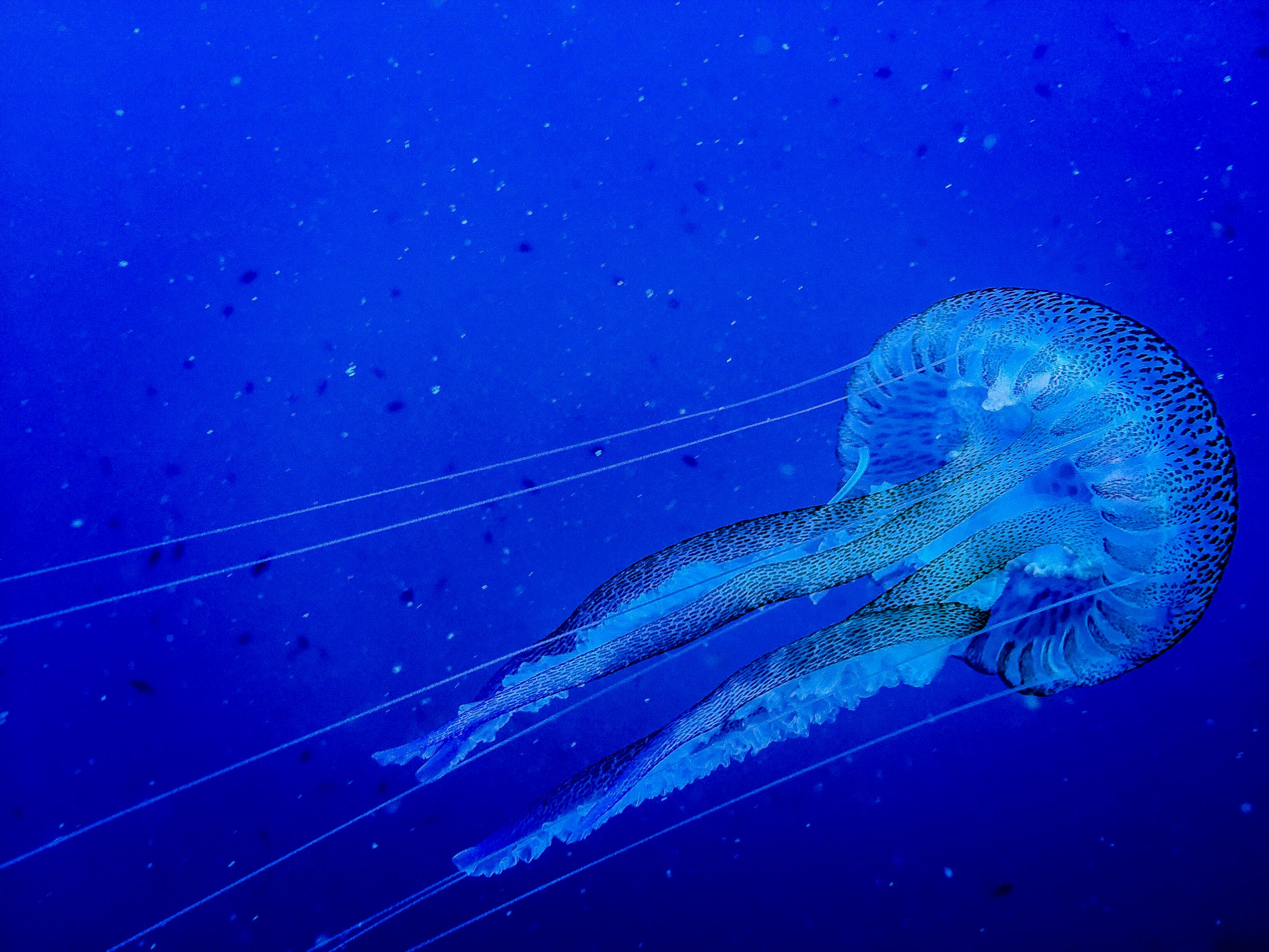
Berwald is the author of Spineless: The Science of Jellyfish and the Art of Growing a Backbone.
When Hurricane Harvey loomed off the coast of my home state of Texas, it seemed to fill the entire Gulf of Mexico. When it roared on land, it pummeled the towns of Rockport and Port Aransas, whose tawny beaches I’ve walked with my kids, pointing out the indigo sails of Portuguese man o’ war jellyfish. Harvey’s eye took direct aim at the University of Texas’ Marine Science Institute, flattening not just the facility itself, but priceless samples awaiting analysis.
After Harvey left Port Aransas, it spun back into the Gulf of Mexico over record sea temperatures as great as 4 degrees Fahrenheit above normal. Thermodynamic laws require that warmer air holds more water vapor. The heat armed the storm with a mighty arsenal of water vapor.
Then Harvey returned to land, dumping a catastrophic amount of rain on Houston. My Facebook feed filled with pleas for rescue from the rising waters. Friends’ houses flooded — houses that had always been on dry land before. A chemical plant blew up, twice. Toxic chemicals oozed from Superfund sites. Dozens died in the deluge, mostly by drowning.
And all the while, alongside the heartbreak and horror, I kept thinking about a strange harbinger: jellyfish.
Diaphanous in form yet menacing in sting, jellyfish have a powerful capacity to capture our imagination. They undulate in a primal rhythm, blinking open and closed like eyes that can peer into the soul of the sea. And what they are seeing are changes produced by us here on land.
Because we burn fossil fuels, which release greenhouse gasses, not just the atmosphere but ocean waters are warming. At the same time, our ship traffic transports animals to new places, and sometimes these exotics find home-like conditions where in the past those conditions would have been unsuitable.
That’s what happened in the eastern Mediterranean, where a jellyfish from the tropical Indian Ocean has found warm, homey waters and now forms huge aggregations called blooms that stretch for tens of miles every summer. The fierce stings of these animals chase beach-goers out of the water. Their gooey bodies clog machinery at power plants, halting operations.
Rampant coastal development provides new habitat for a jellyfish stage called a polyp that looks like a sea anemone. When it finds a hard surface like a dock or a jetty to grow on, a single polyp can proliferate into a dozen or even more medusae. And fields of polyps grow on those hard structures.
That’s likely what happened off the coast of Italy, where gas platforms are thought to be the home for a new invasion of jellyfish. In the twentieth century in the Adriatic Sea, moon jellies, pinkish with their characteristic four-leafed clover on top, were a rarity. Now they are ubiquitous.
And as we wash pollution into our waters, we create low-oxygen environments. Some jellyfish, with their low metabolic rate due to their a-cellular jelly insides, can survive more easily there than fish, with their oxygen-guzzling muscled tissues.
That is part of what happened in the Yellow Sea, where pollution is unchecked. It is the birthplace of a maroon jellyfish that reaches a weight of 500 pounds. Blooms of the creature were a once-a-generation event before 2000 — the kind of thing fishermen mentioned to their sons. But jellyzillas swept from China in the Tsushima Current, have plagued Japan’s coast almost every year of the 21st century. In 2009, a fishing boat caught so many that their weight capsized the vessel. (Fortunately, the crewmembers were rescued.)
And our lack of oversight of the fishing industry, which has removed more than 90% of the large fish from the seas, has depleted the predators of jellyfish as well as their competitors. Jellyfish are eaten by some fish, and jellyfish eat the same small zooplankton that fish do. The ecological vacuum left by unrestrained fishing can allow jellyfish to expand their influence in marine ecosystems.
That’s what happened off the coast of Namibia, once one of the world’s most productive fisheries. Prior to 1960s, the rich Benguela current nourished a yield of a million tons of fish annually, until a fishing free-for-all depleted the ecosystem. Today, Namibian waters contain three times more jellyfish than fish by weight. There are reports of seabirds and seals starving.
While researching jellyfish for the last six years, I’ve grown to understand that in the places where these large, pervasive jellyfish blooms occur, our oceans’ systems are out of whack. The blooms are a call for us to become better stewards of our oceans.
There’s a real disconnect between us on land and what happens in the ocean. We are ultimately terrestrial creatures. It’s easy to ignore a power plant clog in the Mediterranean, a marine ecosystem disrupted in Japan, a fishing industry lost in Namibia. There seem to be more pressing things closer at hand.
But this summer proved that disconnect is dangerous. Hurricane Harvey was even more evidence that what the jellyfish are telling us about the damaged oceans is not just a warning about an off-in-the-future time or a place somewhere else. This is not a vague the-world-is-all-connected idea. Harvey is a tangible, physical cost of our disregard. The health of the ocean is our health too.
More Must-Reads From TIME
- Dua Lipa Manifested All of This
- Exclusive: Google Workers Revolt Over $1.2 Billion Contract With Israel
- Stop Looking for Your Forever Home
- The Sympathizer Counters 50 Years of Hollywood Vietnam War Narratives
- The Bliss of Seeing the Eclipse From Cleveland
- Hormonal Birth Control Doesn’t Deserve Its Bad Reputation
- The Best TV Shows to Watch on Peacock
- Want Weekly Recs on What to Watch, Read, and More? Sign Up for Worth Your Time
Contact us at letters@time.com